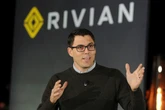There are upwards of 1.7 million nonprofit organizations across the country. But that figure includes everything from public foundations to private charities to your hometown’s little league team, as long as it has a tax-exempt status. It’s a crowded field, and nonprofits are addressing a wide range of issues—from forever chemicals and data privacy to workplace mental health and medical debt.
So how can a nonprofit stand out and, most importantly, succeed? For many, success means having the biggest impact possible for its desired audience. And in order to do that, a nonprofit has to have clarity around its purpose and mission.
To Robert Ashcraft, executive director of the Lodestar Center for Philanthropy and Nonprofit Innovation at Arizona State University, a guiding principle for nonprofits has to do with something former Girl Scouts CEO Frances Hesselbein said. Hesselbein, who passed away in 2022, was considered a thought leader in the nonprofit space and had described her organization as “mission-focused, values-based, and demographics-driven.” Those parameters are key to any not-for-profit—and a common thread throughout Fast Company’s list of most innovative nonprofits of 2024.
Take USAFacts, which aims to make government data accessible. Its America in Facts 2023: A Data Driven Report for Congress did just that, unearthing data from more than 100 government sources. Or Consumer Reports, which wants a “fair and just marketplace for all“—and which empowered people to protect their private data from companies through a simple app. “There’s not noise,” Ashcraft says. “It’s crystal-clear mission driven.”
When it comes to values, consider the United Auto Workers, a labor union that made big gains after historic strikes against the Big Three automakers—and which has more plans to fight for workers. “It’s very clear, the value proposition about empowering employees and leveling a lot of playing fields about economics and workforce corporations,” Ashcraft adds.
And as for demographics-driven? That doesn’t necessarily mean hyperlocal—though it can, as is the case with the Pennsylvania Horticultural Society, which uses greenery to give tangible benefits to residents in the greater Philadelphia area. Nonprofits can be demographics-driven even when they work all over the world, like the World Mosquito Program, which prevents mosquito-transmitted diseases by breeding disease-blocking bugs.
Something else that connects the wide array of nonprofits on the most innovative companies list, Ashcraft says, has to do with how clear they are about measuring results. “Some might say, ‘Well that’s not innovative, that’s just how it’s done.’ But for some it’s actually innovative how you get about measuring results, how those results inform decision-making, how it amplifies the mission-focused, values-based, demographics-driven approach to their purpose,” he says.
The nonprofit industry “covers every topic imaginable, every purpose, every way in which people want to organize around the things they care about,” Ashcraft says. To not just survive but thrive in that noisy sector takes innovation—around their mission and how they go about it. For some, innovation begins with “how bold and audacious their goals are,” he adds (see the San Diego Zoo Wildlife Alliance’s work on conservation through cloning, for example).
Nonprofits face unique challenges, of course, like how to pay their bills when they’re not profit-motivated, even as they rack up expenses. But weathering those challenges comes back, again, to mission, values, demographics—and measuring results. “What are you here for? What’s your purpose? What are the values you bring forth?” Ashcraft says. “Then when you start getting into things like measuring results, how do you know when you’ve reached the promised land?”
Explore the full 2024 list of Fast Company’s Most Innovative Companies, 606 organizations that are reshaping industries and culture. We’ve selected the firms making the biggest impact across 58 categories, including advertising, artificial intelligence, design, sustainability, and more.










No comments